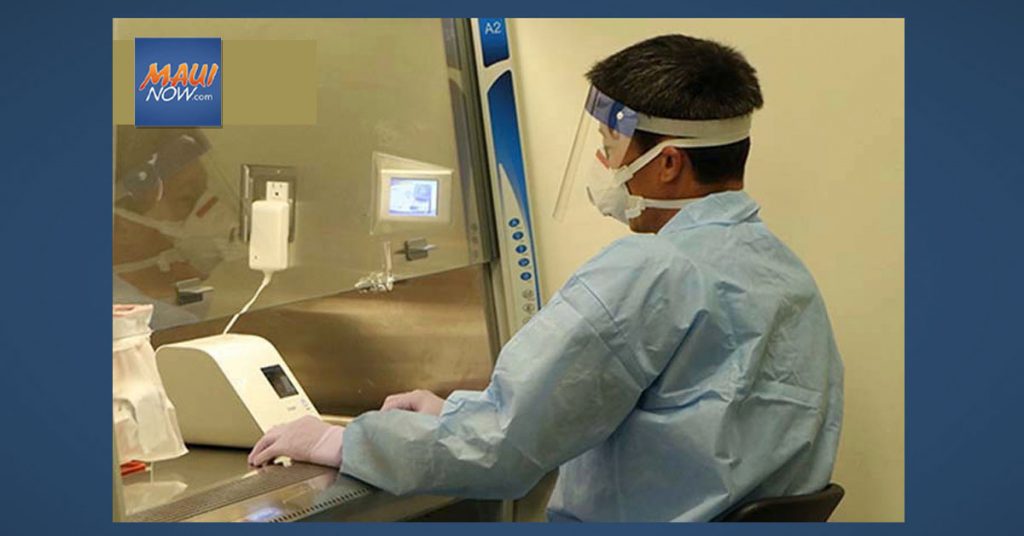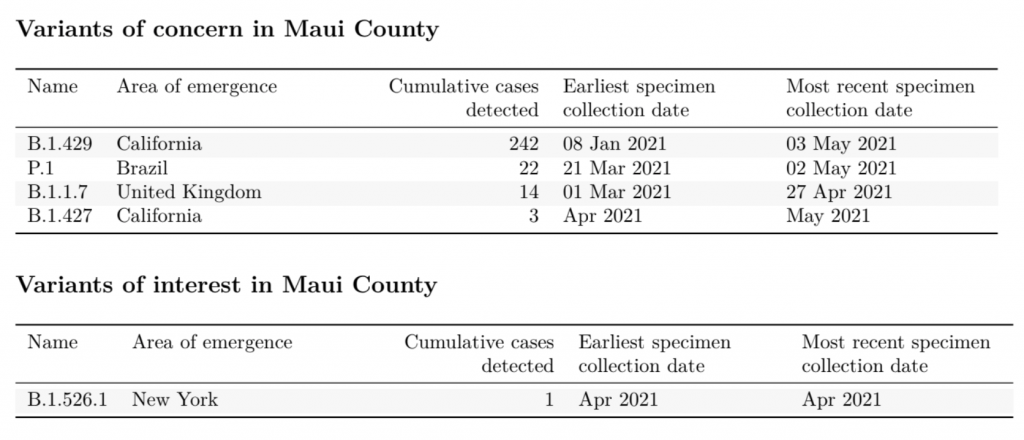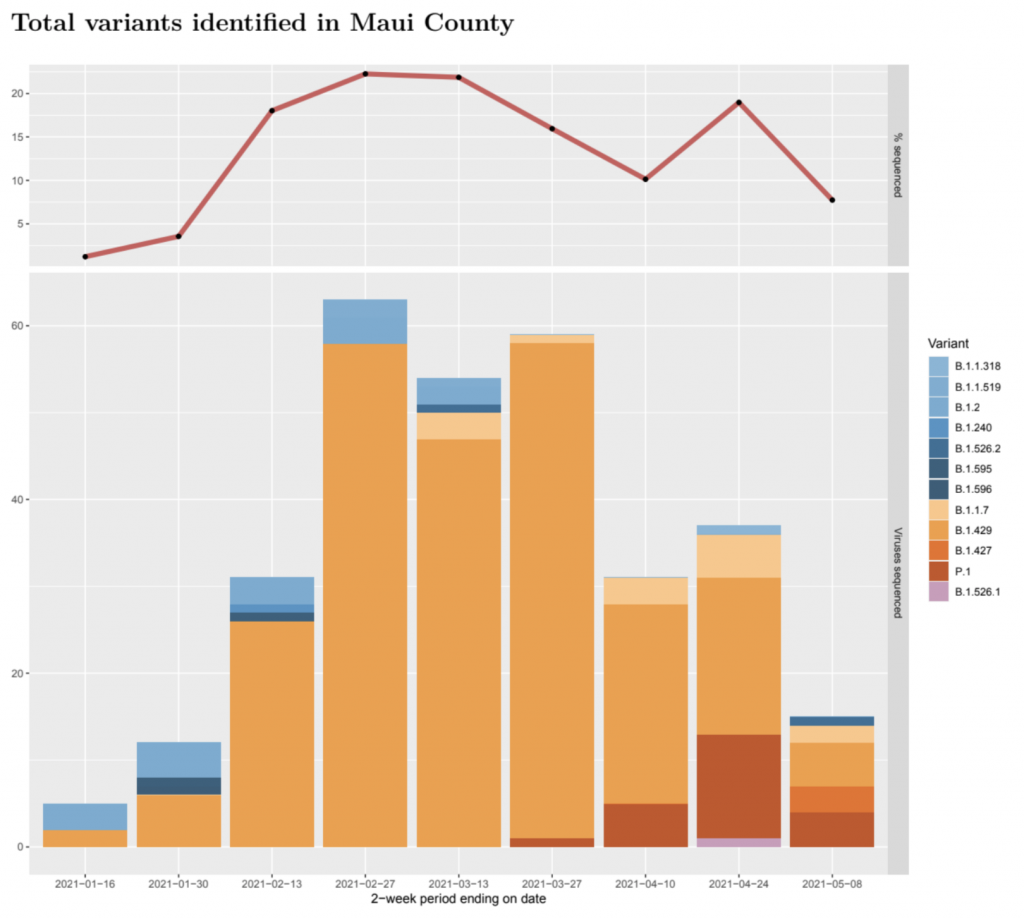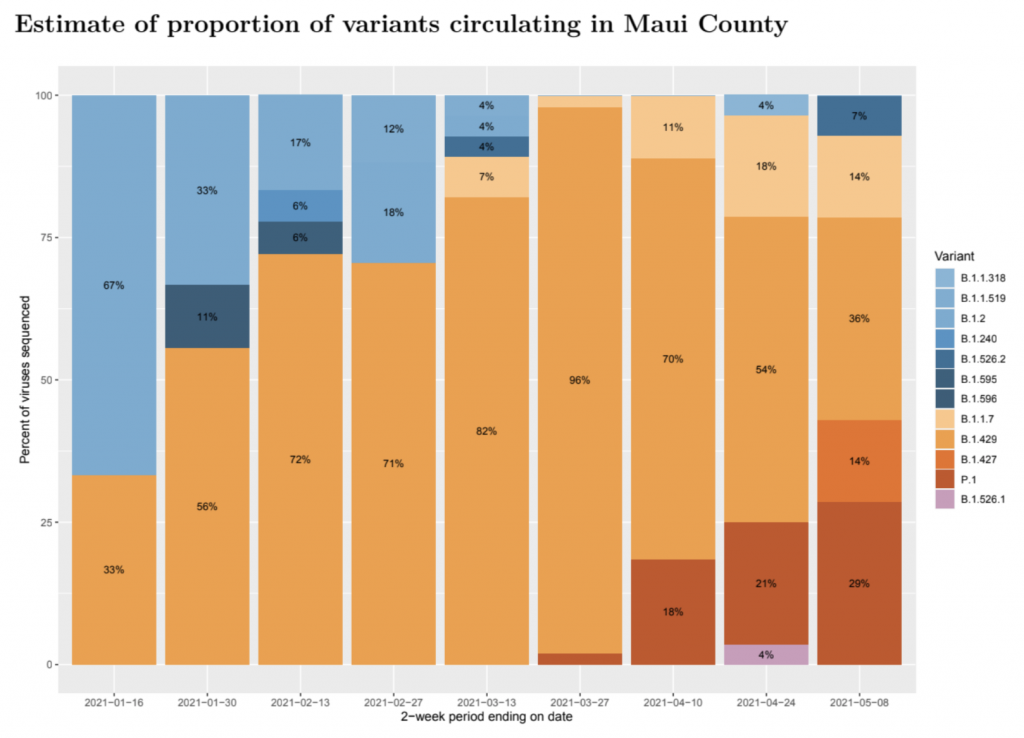DOH: Variants are Dominant COVID-19 in Hawai‘i

A report by the Hawai‘i Department of Health’s State Laboratories Division shows COVID-19 (SARS-Cov-2) “variants of concern” account for a greater percentage of total COVID-19 cases in Hawai‘i than ever before, and that percentage continues to increase.
Maui specific data was compiled as part of the report. According to the document, there were a total of 242 cumulative cases of B.1.429 found in Maui County between Jan. 8 and May 3, 2021.
The B.1.429 variant, first found in California, was the dominant variant in Hawaiʻi in March and early April. State health officials say it has been detected 631 times.
The State Lab is reporting a growing presence of the P.1 variant in Hawaiʻi, which it describes as “highly infectious” saying it may be more resistant to antibodies from vaccination or previous infection. The P.1 variant, first detected in Brazil, has been found in 36 specimens in Hawaiʻi, including 22 on Maui and 13 on O‘ahu. The Maui cases were detected between March 21 and May 2, 2021.
DOH officials say the B.1.1.7 variant, first found in the United Kingdom, replaced the B.1.429 variant as the most dominant COVID strain in the state in late April. The B.1.1.7 variant now accounts for at least 61 percent of variants circulating in the islands. The B.1.1.7 has been detected 304 times in the state. Here on Maui, there were 14 cases occurring between March 1 and April 27, 2021.
The full data set for Maui is posted below:

“Variants of concern now make up more than 90 percent of the genomes sequenced by our lab,” said SLD Director Dr. Edward Desmond in a department press release. “We detected our first variants in January and in just four months they have replaced the original COVID-19 lineages as the COVID we find most often.”
SLD has detected 1,023 specimens of variants of concern since the first variant of concern was detected in Hawai‘i on Jan. 21, 2021.
“The B.1.1.7 and the B.1.429 variants are more transmissible than original COVID-19 lineages,” said Acting State Epidemiologist Dr. Sarah Kemble. “These variants move more easily from person to person and therefore may spread more quickly through the community and be harder to contain.”
“The best way to protect yourself from the variants and slow their spread is to get vaccinated as soon as possible,” said Health Director Dr. Elizabeth Char. “We know the vaccines are effective against the current variants.”
Below is additional data provided in the Department of Health report, specific to Maui County:

- The above bar graph shows the total number of variants detected in Maui County in each 2-week interval ending on the date shown (date represents when the specimen was collected from a patient)
- The red line graph above it shows the percentage of the PCR-test positive samples from each 2-week time interval that were sequenced.
- SARS-CoV-2 genome sequencing may not be a random sample of all cases. This figure does not estimate the prevalence of the population.
- Sequencing can be performed on stored patient specimens at any time, so these numbers may change as additional specimens are sequenced, especially for the last 2-week period, for which a number of samples are being currently processed.

- The chart above shows the estimate of biweekly percentages of the SARS-CoV-2 lineages circulating in Maui County, grouped in two-week intervals (based on the date of collection of samples).
- Not all positive SARS-CoV-2 specimens are sequenced and sequenced specimens are not a random selection of all COVID-19 cases in Hawaii. This chart has been generated only counting samples that were selected randomly for the purpose of surveillance of community variants, to avoid over-representing the samples that were selected for investigations of clusters.
- Sequencing of certain specimens can be delayed for technical reasons. For this reason, the dataset used for this report is dynamic and specimens that are newly sequenced will be added to the dataset as sequencing occurs. Because of this, trends based on historical data can change over time.










